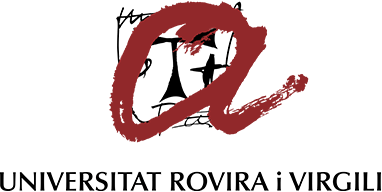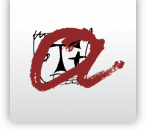Institutional identity
The University must communicate everything it does. This is an unavoidable commitment to fulfill the goal of putting knowledge at the service of society, and also to be accountable as a public service. At the same time, all communication actions of the URV must unequivocally identify the institution, both to assume responsibility and to assert its merits.
With these objectives, the Governing Council of the URV approved on July 11, 2013, the criteria with which this Institutional Image Manual has been developed. It is a living and flexible document that specifies the criteria for identifying the institution and all the units, services, programs, and activities of the URV group.
The Manual establishes uses and recommendations based on different communication media and contexts. The creation of logos, templates, and any identification element applying the criteria set forth in this Manual is the responsibility of the University's Communication and Marketing Office. In the case of joint actions with third parties, the form of identification must be resolved in the respective agreements or contracts.
The objective of this document, therefore, is to provide the university community with transversal and harmonized identification tools to enhance the visibility of the URV and all its parts.
Basic identity manual:
Corporate colours
The systematic use of corporate color codes helps identify the communications of the University. The main colors are derived from the colors used in the logo.
| COLOUR | PANTONE | C | M | Y | K | R | G | B | WEB | ||||
| URV Red | 7623 C | 28 | 93 | 86 | 27 | 144 | 41 | 42 | #90292A | ||||
| URV Black | P Process Black C | 0 | 0 | 0 | 100 | 35 | 31 | 32 | #231F20 |
Complementary colors allow for the development of diverse and harmonious communications. They are recommended for composing presentation documents and others.
| COLOUR | PANTONE | C | M | Y | K | R | G | B | WEB | ||||
| Red | 185 C | 1 | 100 | 92 | 0 | 235 | 0 | 40 | #EB0029 | ||||
| Dark red | 187 C | 22 | 100 | 89 | 15 | 172 | 22 | 44 | #AC162C | ||||
| Yellow | 116 C | 0 | 18 | 100 | 0 | 255 | 206 | 0 | #FFCE00 | ||||
| Pumpkin | 130 C | 2 | 38 | 100 | 0 | 247 | 168 | 0 | #F7A800 | ||||
| Light gray | Cool Gray 1 C | 13 | 11 | 12 | 0 | 219 | 217 | 214 | #DBD9D6 | ||||
| Dark gray | 429 C | 38 | 27 | 27 | 0 | 164 | 169 | 173 | #A4A9AD |
You can review the URV Institutional Identity Manual for the institutional colors for knowledge areas and functional areas.
Corporate typography
Optima typography: The main typeface is Optima Roman, Optima Demi, and Optima Bold. It should be noted that the use of the Optima typeface family requires the corresponding license, which applies to both the main typeface and complementary versions.
Noto typography: The second family of complementary typefaces, Noto, is freely available and can be downloaded from the internet. This family is especially recommended for digital communications.
If you do not have the Optima typeface, you can request its installation through sau.urv.cat.
Security area
Safety areas are created to ensure that the image is visible and legible in all communications.
Around the University's image, a safety area equivalent to one-third of the height of the image should be preserved. Elements that are not part of the image, such as typography or images (excluding background treatment and typographic composition of the logo), should not encroach upon this area.
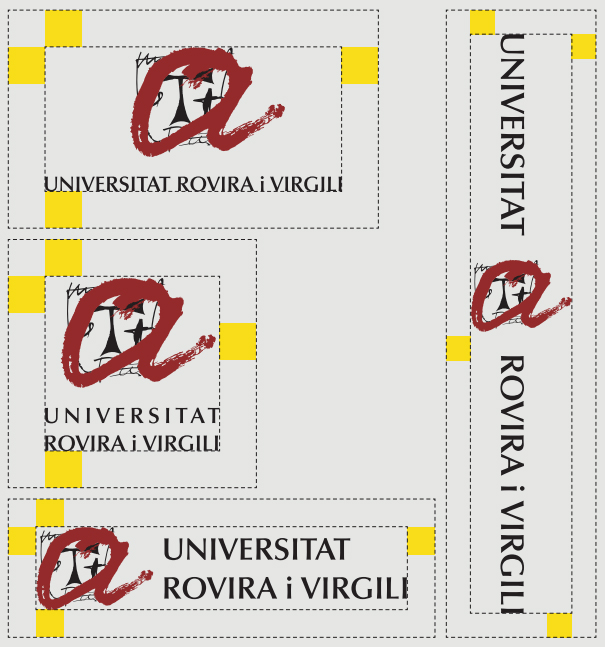
Prohibited applications
Modifications and distortions of the University's image should be avoided.
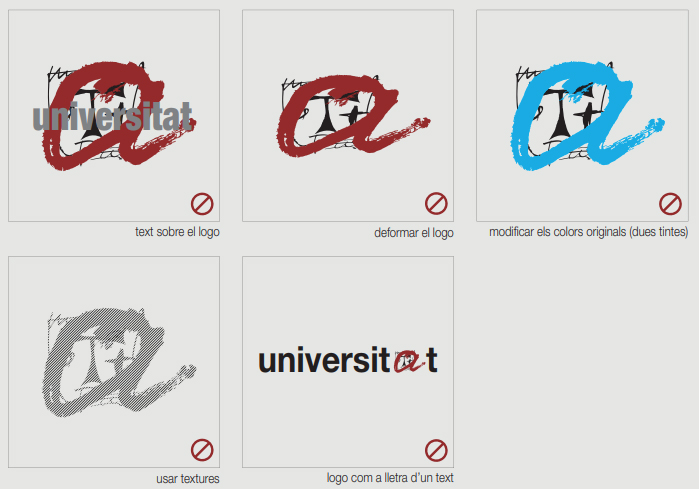
Modifications to the relationship between the image and the typographic identification in any of the logo versions are not allowed.
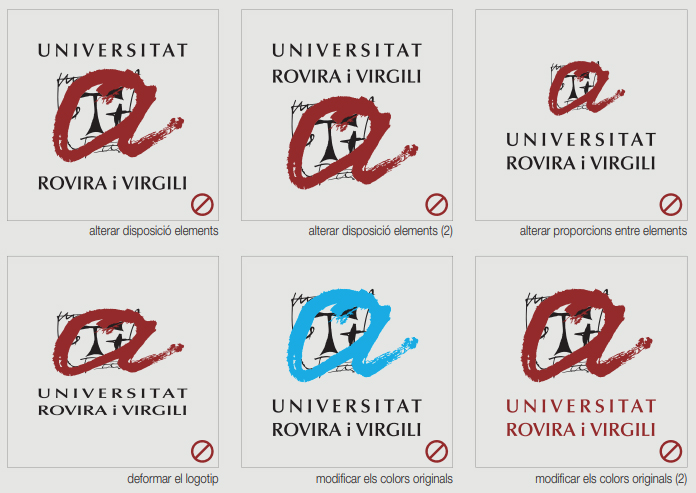
Examples of acceptable backgrounds. The condition is that there is sufficient contrast to ensure a complete and unequivocal reading of the logo:
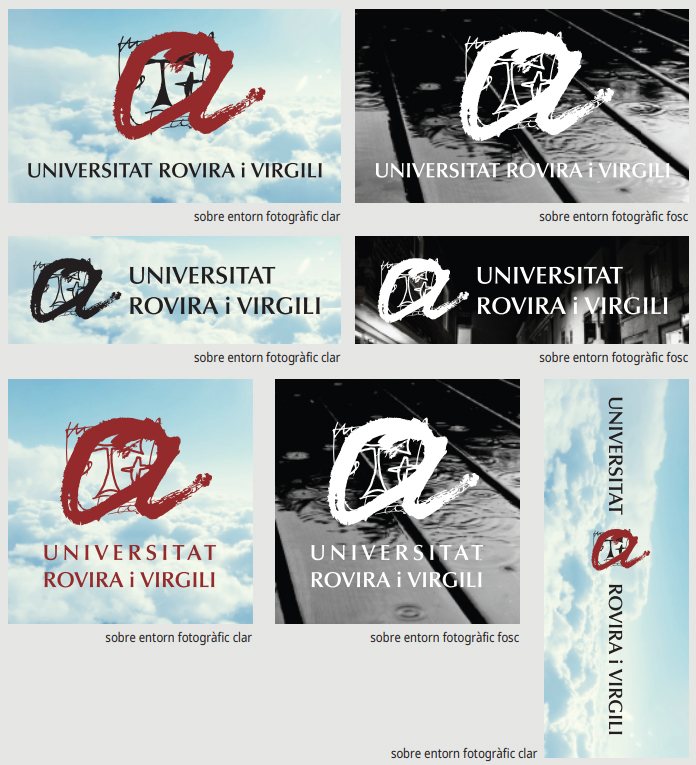

Unite identification and logo creation
Units, groups, and services should request the Communication and Marketing Office to generate their logo in order to comply with the guidelines of the URV Institutional Identity Manual.
URV units must be identified in all cases using the University's corporate image. Additionally, with flexible typographic identification, a family of logos can be created to meet the different signature needs of the units according to the communication context.
The University's logo cannot be replaced or combined with other brands without the approval of the Bureau for Communications and Marketing.

